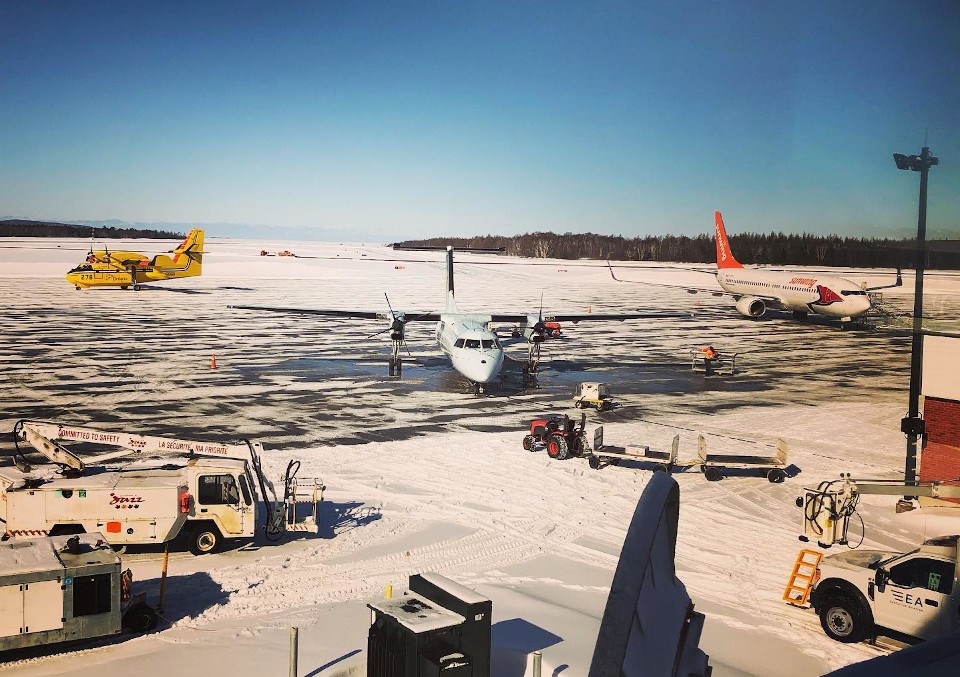A nearly $14-million infrastructure rehabilitation project will get underway this spring to improve safety and make operations more efficient at the Sault Ste. Marie Airport.
"This is going to be the biggest project in the history of the airport, and we're certainly looking forward to carrying this out,” said Terry Bos, CEO of the Sault Ste. Marie Airport Development Corp., during a May 13 virtual funding announcement.
The federal government is providing $8,966,913 through the Airports Capital Assistance Program (ACAP), a fund that's designed to help smaller airports not owned by the government cover major capital projects.
The airport development corporation will cover the remaining $4.8 million portion with funds from its capital budget.
ACAP is providing a further $64,849 toward the purchase of a new material combo spreader for the airport.
“We are in our 23rd year of ownership and operator of the airport, and this achievement could not have been accomplished without the continued partnership of all levels of government,” said board chair Jerry Dolcetti.
“Today is historic for the airport in receiving $9 million funding from ACAP to assist in advancing much-needed infrastructure projects.”
The rehab project consists of two parts.
In the first, the runway drainage system will be upgraded, replacing 9,054 metres of 60-year-old pipe for the sub-drain system, for runways 04-22 and 12-30, all taxiways, and the apron.
In addition, 113 manholes and airfield drainage ditches, which are 55 years old, will be replaced.
Want to read more stories about business in the North? Subscribe to our newsletter.
The second part of the project involves the rehabilitation of 60-year-old pavement on the 4-22 runway and associated taxiways, which has extensive cracking.
Other components being replaced include edge lighting, guidance signs and windsocks, omnidirectional approach lighting, and precision path indicators.
The runway itself will be narrowed to 45 metres from the current 60 metres, a move that will bring the airport into compliance with contemporary Transport Canada standards.
Bos said the project is expected to get underway in June and should be complete by the end of September.
Passenger traffic has dipped significantly over the last year due to the COVID-19 pandemic, Bos said.
According to the most recent numbers, just 1,334 travellers passed through the airport in April, which is a decrease of 92.1 per cent from April 2019 when 16,842 passengers travelled through the airport.
Yet the facility has remained operational through the pandemic, and Bos said there's been a "very large increase” in the number of medical evacuation flights taking off from and arriving at the airport.
If there's a silver lining to this low point in passenger air travel, Bos said, it's that interruption to travellers will be minimal during construction.
“Hopefully, once the work is done by September, we'll come roaring back and be able to fit many more aircraft than we used to,” he said.
Since the airport became a stand-alone entity in 1998, Bos said, the airport development corporation has spent nearly $45 million on capital improvements.
Sault MP Terry Sheehan said in recognition of the impact COVID-19 has had on small, regional airports, the government is adding $186 million over two years to the ACAP program.
The Sault airport project is one of 83 projects at 63 airports that have been selected to receive funding this year.
“The safety and efficiency of operations in Sault Ste. Marie is a top priority,” Sault MP Terry Sheehan said in announcing the ACAP funding.
“As we reopen our economies that have been affected by the COVID-19 pandemic, the Sault Ste. Marie Airport is going to be absolutely critical as we build back better.”




